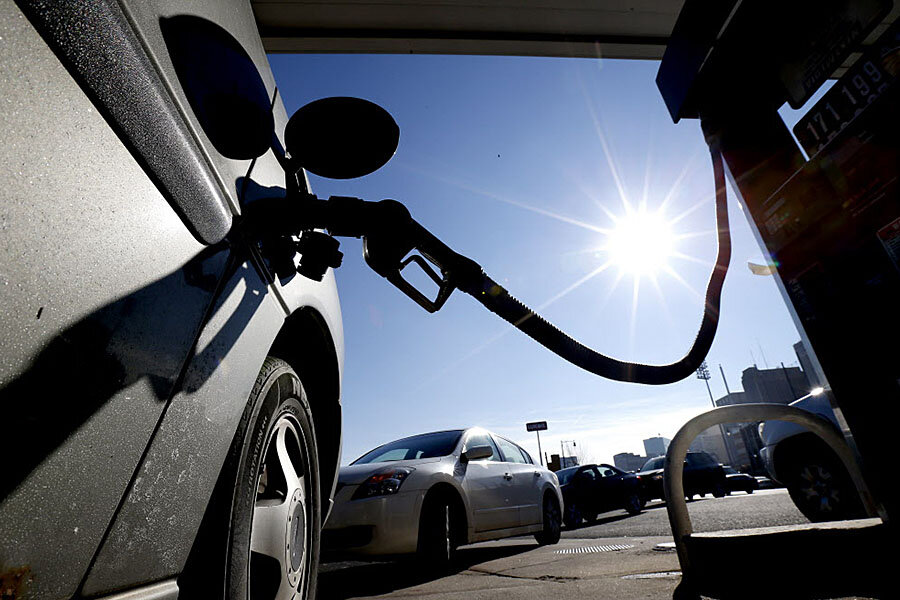Oil prices plunge to 6-year-low. Why gas prices won't follow suit.
Loading...
Buckle up for an energy prices double dip.
After rebounding slightly over the past month, oil prices are back on the decline again, hitting a 6-year-low on Monday. Supply is outstripping demand as US crude stockpiles hit 80-year highs and Iran nuclear talks hint at a possible lifting of sanctions on the country's energy sector. That's translating to more savings at the gas pump, but drivers probably shouldn't expect the same kind of dramatic decline they saw when oil prices collapsed last fall.
The reason? Warm weather – and the pent-up driving demand it unleashes – is right around the corner. Refiners are already switching over to the more expensive summer-blend fuels, and rising temperatures means more cars on the road and more gasoline consumption. That shift could temper any decline drivers might otherwise see from a renewed plunge in oil prices.
"Gasoline prices may decline slightly here, but I think as we move into the summer driving season, as refiners change their formulation, you won't see much decline in the price at the pump," Andrew Lipow, president of Lipow Oil Associates in Houston, says in a telephone interview.
After rising for 40 days in a row, average US gas prices have dropped for 10 days straight, according to AAA, a Heathrow, Florida-based automotive group. A gallon of gas cost an average $2.42 Tuesday, down 3 cents from a week ago and down more than a dollar from a year ago.
"[G]as prices should remain relatively cheap because crude oil costs are much lower than recent years and U.S. inventories have risen for nine straight weeks, which should keep downward pressure on retail gasoline markets," Michael Green, AAA spokesman, wrote in a blog post Monday.
Crude oil prices – which play a major role in determining gasoline prices – fell by about 60 percent between June 2014 and January 2015, before bouncing back slightly in February. But renewed fears of a supply glut are pushing the market lower again: US oil prices fell 2 percent to close at $43.88 Monday – a six-year low. Oil was down to $43.79 in midday trading Tuesday. It comes as the United States added 4.5 million barrels to commercial crude inventories last week to reach a high not seen at this time of year in at least 80 years, according to the US Energy Information Administration.
Meanwhile, world powers engaged in negotiations with Iran over its nuclear program are showing some optimism over a potential deal. That could end sanctions on the country's energy industry and add hundreds of thousands of barrels of oil to the global oil market. Libya, too, is maintaining oil production, despite significant turmoil in the region.
"I think we’ll test $40 given that inventories in the US continue to increase and we haven’t seen any reduction in oil production in the US as a result of the idling of rigs – as yet. And when you combine that with no actions from OPEC to rein in production, and near record oil production out of Russia, it continues to add to the oversupply in the oil markets," Mr. Lipow says.






